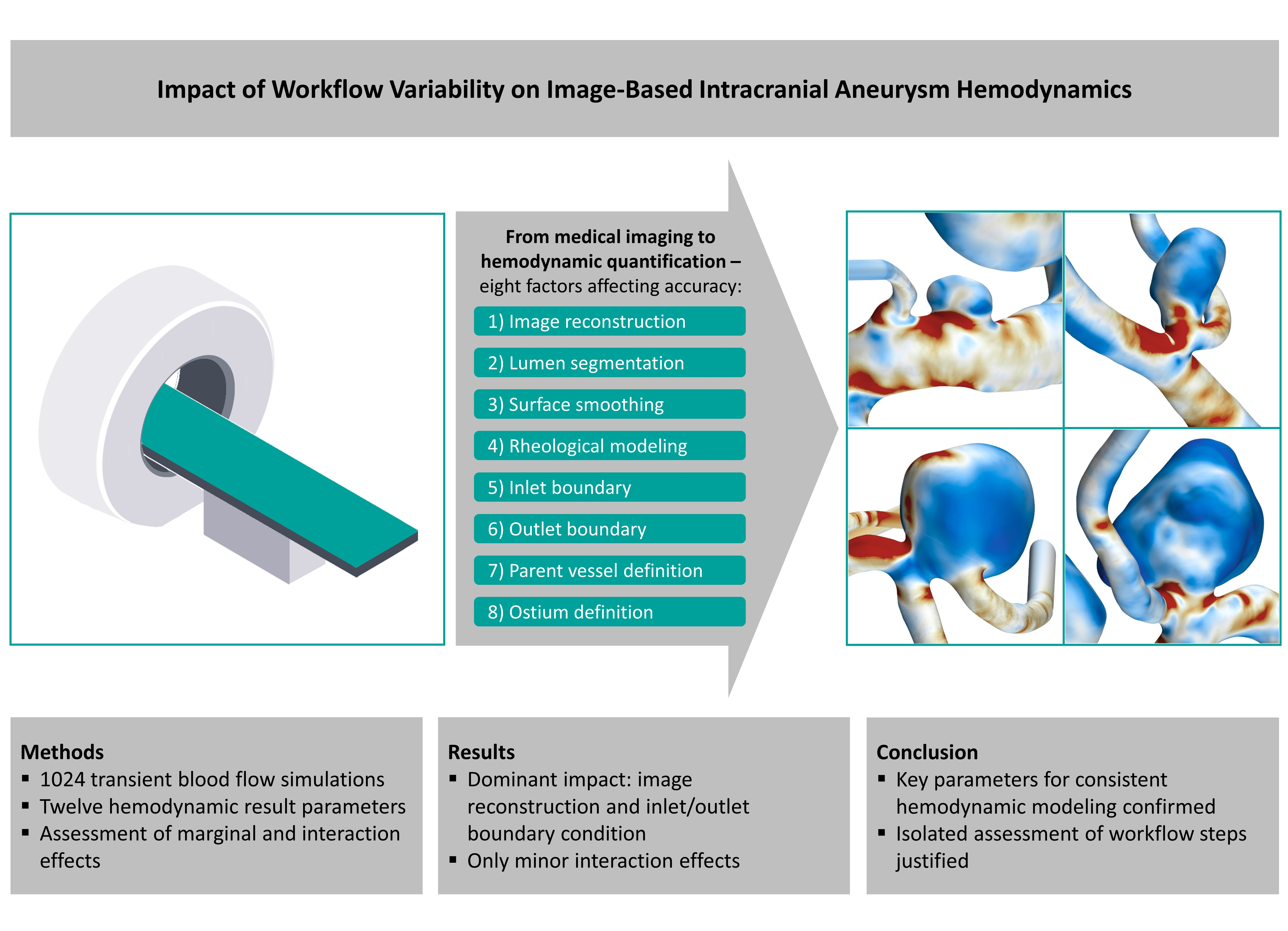NEWS
Hochrangige Fachpublikation zur Genauigkeit von Blutströmungen in Gehirnaneurysmen
Der Forschungscampus STIMULATE freut sich über eine hochrangige Veröffentlichung im Fachjournal Computers in Biology and Medicine (Impact Factor 7). Die Studie mit dem Titel "Impact of workflow variability on image-based intracranial aneurysm hemodynamics", an der mit dem Erstautor Samuel Voß weitere Forschende der Otto-von-Guericke Universität Magdeburg und des Universitätsklinikums Schleswig-Holstein beteiligt waren, untersucht, wie verschiedene Faktoren die Genauigkeit von Blutströmungssimulationen bei Hirnaneurysmen beeinflussen.
Hirnaneurysmen sind potenziell lebensbedrohliche Gefäßaussackungen. Das Risiko einer Ruptur (und damit Hirnblutung) ist schwer vorherzusagen. Die Simulation der Blutströmung kann dabei helfen, Hochrisikopatient:innen frühzeitig zu identifizieren und Behandlungen zu optimieren. Allerdings gibt es zahlreiche Einflussfaktoren, – von der Bildgebung bis zur Auswertung – welche die Genauigkeit dieser Simulationen beeinflussen. In der Studie wurden 1024 verschiedene Simulationen durchgeführt und kritische Einflussfaktoren identifiziert, darunter die Bildrekonstruktion, sowie die Definition von Einström- und Ausströmbedingungen des Blutflusses.
Die Ergebnisse zeigen, dass einige dieser Faktoren erhebliche Auswirkungen auf die Simulationsergebnisse haben, während andere nur minimale Abweichungen verursachen. Diese Erkenntnisse sind essenziell, um künftig zuverlässigere Berechnungen zu ermöglichen und so die Diagnostik und Therapieplanung von Aneurysmen zu verbessern.
Mit dieser Forschung trägt der Forschungscampus STIMULATE dazu bei, modernste Bildgebungstechnologien mit innovativen Simulationsmethoden zu verbinden – ein wichtiger Schritt hin zu personalisierten, risikoarmen Behandlungsstrategien in der Neurointervention.
Die Publikation ist hier einsehbar.
High-ranking scientific publication on the accuracy of blood flow in brain aneurysms
The Research Campus STIMULATE is pleased to announce a high-ranking publication in the journal Computers in Biology and Medicine (Impact Factor 7). The study entitled ‘Impact of workflow variability on image-based intracranial aneurysm hemodynamics’, in which lead author Samuel Voß and other researchers from Otto von Guericke University Magdeburg and the University Medical Centre Schleswig-Holstein were involved, investigates how various factors influence the accuracy of blood flow simulations in brain aneurysms.
Brain aneurysms are potentially life-threatening vascular protrusions. The risk of rupture (and thus cerebral haemorrhage) is difficult to predict. Simulating blood flow can help to identify high-risk patients at an early stage and optimise treatment. However, there are numerous influencing factors - from imaging to evaluation - that affect the accuracy of these simulations. In the study, 1024 different simulations were performed and critical influencing factors were identified, including image reconstruction and the definition of inflow and outflow conditions of the blood flow.
The results show that some of these factors have a significant impact on the simulation results, while others cause only minimal deviations. These findings are essential to enable more reliable calculations in the future and thus improve the diagnosis and treatment planning of aneurysms.
With this research, the Research Campus STIMULATE is helping to combine state-of-the-art imaging technologies with innovative simulation methods - an important step towards personalised, low-risk treatment strategies in neurointervention.
The publication can be viewed here.
